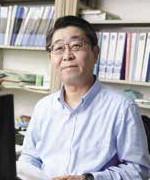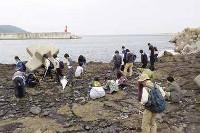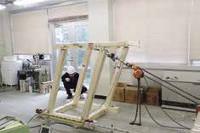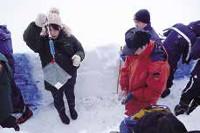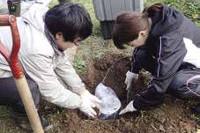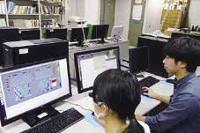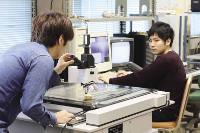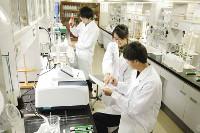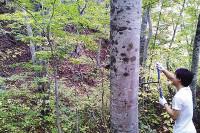- Global Environment and Disaster Prevention Sciences (website by the department)
Point
Comprehensively teaching and researching the global environment
By deepening our understanding of the universe that surrounds the earth, we teach various aspects of the earth as an inter-related series of one system – for example, the atmosphere and water which are essential for our life, composite material and characteristics of the land that supports buildings.
Coexistence of human-being and the earth
Based on knowledge of the global environment, educated personnel will understand the mechanisms of environmental change that threaten human life and the technology to reduce disasters.
Searching the earth and the universe by one’s own hand
We perform training and experiments to deal with various aspects of the earth, such as outdoor surveys and field observations. We have various facilities including earthquake and volcanic observatories, cold region weather laboratories, X-band weather radars to develop our understanding of the universe and the earth.
Voice of undergraduate
Staff List
Global Environment and Disaster Prevention Sciences
| Name | Position | Specialty | Research Content |
|---|---|---|---|
| ICHIMURA, Masakatsu | Professor | High-energy astrophysics | Observation of various types of cosmic rays originating from the universe. Survey of high-energy phenomena and information on the space through which they pass. |
| UMEDA, Koji | Professor | Topography, Natural Disaster Sciences | Reconstructing past natural disasters such as earthquakes, tsunamis, eruptions, and floods by deciphering event deposits and contribute to disaster prevention and mitigation. |
| ORIHASHI, Yuji | Professor | Igneous petrology, Topography, Radiochronology | We aim to understand the composition of igneous rocks using the geochemistry method to construct a new magma origin theory. Development of most-advanced geochemistry methods is also carried out. |
| MAEDA, Takuto | Professor | Seismology | Study of heterogeneous structures within the earth and the developmental course of earthquakes and tsunamis through modelization of seismic waves and tsunami propagation. |
| YATAGAI, Akiyo | Professor | Meteorology, climatology | Equipped with accurate rainfall data, problems caused by climate change are addressed using analysis and research of the atmosphere cycles and disaster data |
| ISHIDA, Sachinobu | Associate Professor | Atmospheric physics | Study through observation of changes in the material circulation of heat, water, etc., depending on the type of earth surface and climate change. |
| KAMIHARAKO, Akihisa | Associate Professor | Infrastructure maintenance engineering | Aging of reinforced concrete structures has become a growing social issue. Study of practical reparation and reinforcement methods | TAKAHASHI, Ryuichi | Associate Professor | Astrophysics, Astronomy | Study under the theme of the origin of accelerated expansion of the universe, large-scale structures in the galaxy, the effect of gravitational lens and gravitational waves. | DOKE, Ryosuke | Associate Professor | Geodesy, Tectonic geomorphology, Seismic geology | Research for understanding phenomena around active faults and volcanoes and clarification of their background tectonics |
| HORIUCHI, Kazuho | Associate Professor | Paleoclimatology, Cosmogenic nuclide | Paleoclimatic research on geological/glaciological archives. Study of cosmic ray, solar activity and geomagnetic intensity in the past using cosmogenic radionuclides and its geochronological application. |
| SASAKI, Minoru | Lecturer | Volcanic Geology, Volcanic Rock Petrology | Study of volcanic activity history and change in magma characteristics, through geological investigation and chemical analysis of volcanic ejecta targeting volcanos in Aomori prefecture |
| NEMOTO, Naoki | Lecturer | Topography, Paleontology | Reconstruction of environments of the past, such as water depth and warm/cold weather, using foraminifers, fossils of minute organisms, which have accumulated in the geological layer. |
| OKADA, Rina | Assistant Professor | Natural Disaster Science, Paleontology | |
| KAJITA, Hiroto | Assistant Professor | ||
| HIRANO, Shiro | Assistant Professor | Seismology | Exploring physical processes of earthquakes based on rheology and fracture mechanics with mathematical and numerical modelings. |
Earthquake and Volcano Observatory
| Name | Position | Specialty | Research Content |
|---|---|---|---|
| WATANABE, Kazutoshi | Research Associate | Seismology | Seeking to understand the mechanisms in earthquake occurrence by processing seismic observation data and surveying on the seismic activities around Aomori prefecture. |

